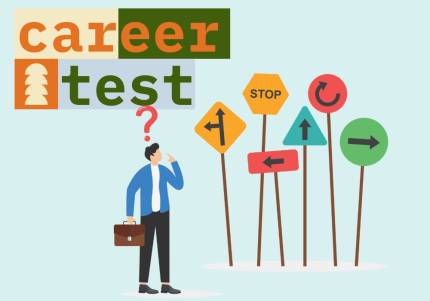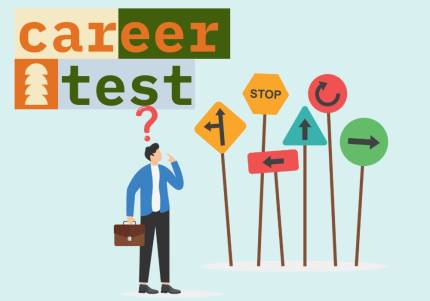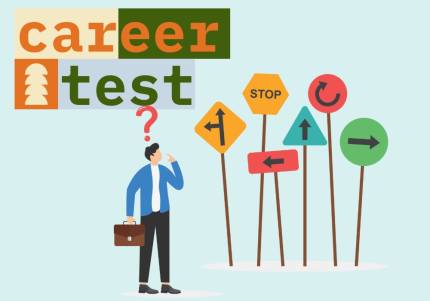What Your Career Anchors Say About Your Professional Drive
- 17 May 2025

The Career Anchors Concept
Developed by MIT Sloan School of Management professor Edgar Schein in the 1970s, Career Anchors represent the fundamental motivational drivers that shape our professional choices throughout our working lives. Unlike surface-level preferences that might shift with circumstances, Career Anchors function as deeply rooted internal compasses guiding career decisions—often unconsciously—toward roles and environments that align with our core values and self-concept.
Schein's pioneering research revealed that while most professionals can temporarily compromise various aspects of their work experience when necessary, certain non-negotiable elements eventually "anchor" them back toward environments honoring these core priorities. This powerful framework provides critical insight into why seemingly attractive opportunities sometimes fail to deliver satisfaction despite objectively positive attributes like compensation or prestige.
The Eight Career Anchors Defined
Through decades of research with thousands of professionals across industries and cultures, Schein identified eight distinct Career Anchors that consistently emerge across populations. The Technical/Functional Competence anchor characterizes professionals who derive primary satisfaction from exercising specialized expertise and continually developing deeper mastery within their domain. These individuals prioritize being recognized as experts above rapid advancement into general management.
Professionals with the General Managerial Competence anchor thrive on integrating diverse organizational functions, exercising leadership influence, and bearing responsibility for overall results. The Autonomy/Independence anchor drives individuals who prioritize self-direction and freedom from organizational constraints above other considerations. Meanwhile, those anchored in Security/Stability orient career decisions around predictability and long-term certainty, often valuing organizational loyalty and structured advancement pathways.
The Entrepreneurial Creativity anchor represents the drive to create something entirely new—whether products, services, or organizations—that bears your personal signature. The Service/Dedication to a Cause anchor prioritizes making meaningful contributions to societal needs above personal advancement. Those with Pure Challenge anchors seek environments offering continuous problem-solving opportunities and competitive conquest. Finally, the Lifestyle anchor characterizes professionals who prioritize integration between work requirements and personal/family needs above all other considerations.
Career Anchor Characteristics and Motivations
- Technical/Functional - Drives for specialized expertise and mastery within a specific domain
- General Managerial - Motivated by leadership responsibility and organizational impact
- Autonomy/Independence - Prioritizes self-direction and freedom from constraints
- Security/Stability - Seeks predictable career paths and organizational dependability
- Entrepreneurial Creativity - Compelled to create new ventures, products or services
- Service/Dedication - Focused on contributing to meaningful causes and helping others
- Pure Challenge - Energized by solving difficult problems and overcoming obstacles
- Lifestyle - Values work-life integration and personal/professional balance
Career Anchors Assessment Process
The Career Orientations Inventory (COI) developed by Schein remains the standard assessment instrument for identifying dominant anchors. This self-administered questionnaire measures relative preferences across the eight anchors through situational scenarios and prioritization exercises. Most professionals display a primary anchor that exerts strongest influence on career decisions, often accompanied by a secondary anchor that provides complementary motivation.
Unlike personality assessments, Career Anchors emerge through actual career experiences rather than inherent traits. Early-career professionals typically discover their anchors through experimentation with various roles and environments, gradually recognizing patterns in what provides sustainable satisfaction versus temporary excitement. For this reason, mid-career professionals often gain most insight from Career Anchors assessment, having accumulated sufficient experiential data to recognize their non-negotiable priorities.
Career Anchor Distribution Across Industries
| Industry | Most Common Primary Anchor | Least Common Primary Anchor |
|---|---|---|
| Technology | Technical/Functional | Security/Stability |
| Finance | General Managerial | Service/Dedication |
| Healthcare | Service/Dedication | Entrepreneurial Creativity |
| Education | Lifestyle | Pure Challenge |
| Government | Security/Stability | Autonomy/Independence |
Organizational Applications
Progressive organizations leverage Career Anchors framework to design differentiated career pathways that accommodate diverse motivational profiles. Rather than assuming all high-potential employees aspire to traditional management tracks, these companies develop parallel advancement opportunities for technically-anchored professionals, autonomous contributors, and other non-traditional profiles. This talent strategy significantly enhances retention rates among specialists who might otherwise leave organizations when forced into management roles misaligned with their anchors.
Career development processes incorporating anchors assessment help professionals make more conscious career choices aligned with their intrinsic motivations rather than external expectations. This self-awareness reduces mid-career crises triggered when professionals advance into roles offering external rewards but violating their anchor priorities. Organizations implementing Career Anchors frameworks report higher engagement levels, improved succession planning outcomes, and more effective talent deployment.
Individual Applications
Understanding your dominant Career Anchor provides crucial insight when evaluating potential employers, considering promotions, or contemplating career transitions. Each anchor implies different criteria for organizational fit—Security-anchored professionals should investigate company stability and structured advancement opportunities, while Autonomy-anchored individuals might prioritize flexible work arrangements and independent decision-making authority.
Career Anchors assessment proves particularly valuable during career disruption periods when professionals must rebuild or redirect their trajectories. Rather than randomly exploring opportunities, anchor-aware professionals can systematically evaluate options against their core motivational requirements, maintaining psychological continuity despite external changes. This strategic approach significantly reduces transition stress while accelerating reconnection with meaningful work.
Evolution of Career Anchors Theory
Contemporary research extends Schein's original framework to address evolving workplace realities. Researchers have identified potential additional anchors including Digital Lifestyle (prioritizing technology-enabled flexibility), Global Connection (seeking international experiences and cross-cultural exchange), and Wealth Accumulation (focusing on financial independence and asset development). These emerging anchors reflect changing generational priorities and globalized career opportunities.
Career Anchors demonstrate remarkable stability across cultural contexts, with the eight primary anchors consistently emerging across global populations despite varying societal emphases. However, cultural factors significantly influence the relative prevalence and expression of different anchors. For example, Asian professional contexts often demonstrate higher Security/Stability orientation, while North American environments typically feature greater Entrepreneurial Creativity representation.



